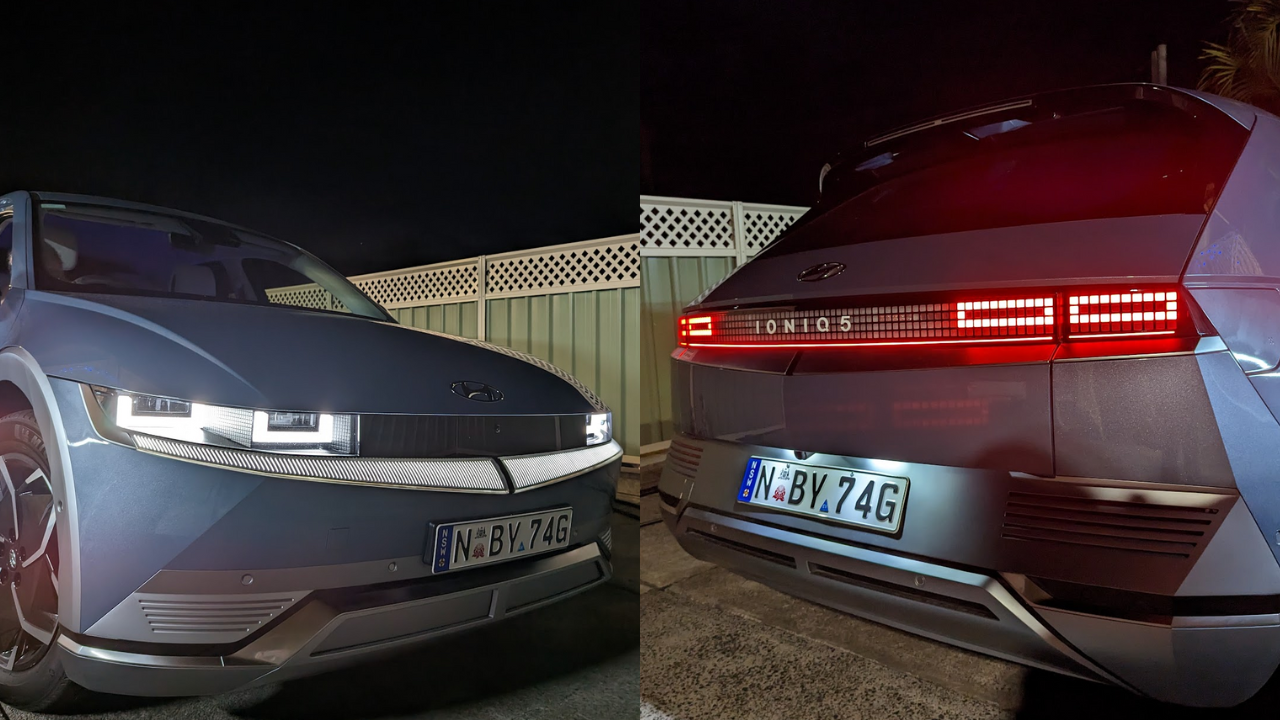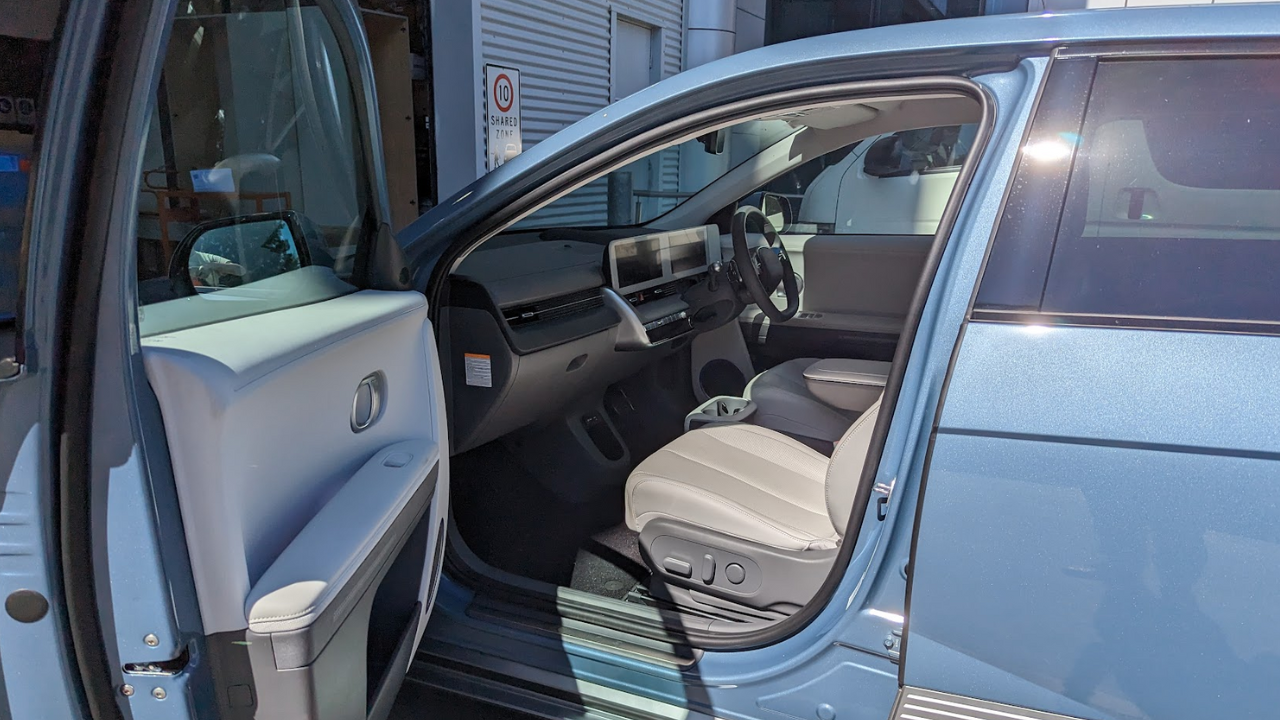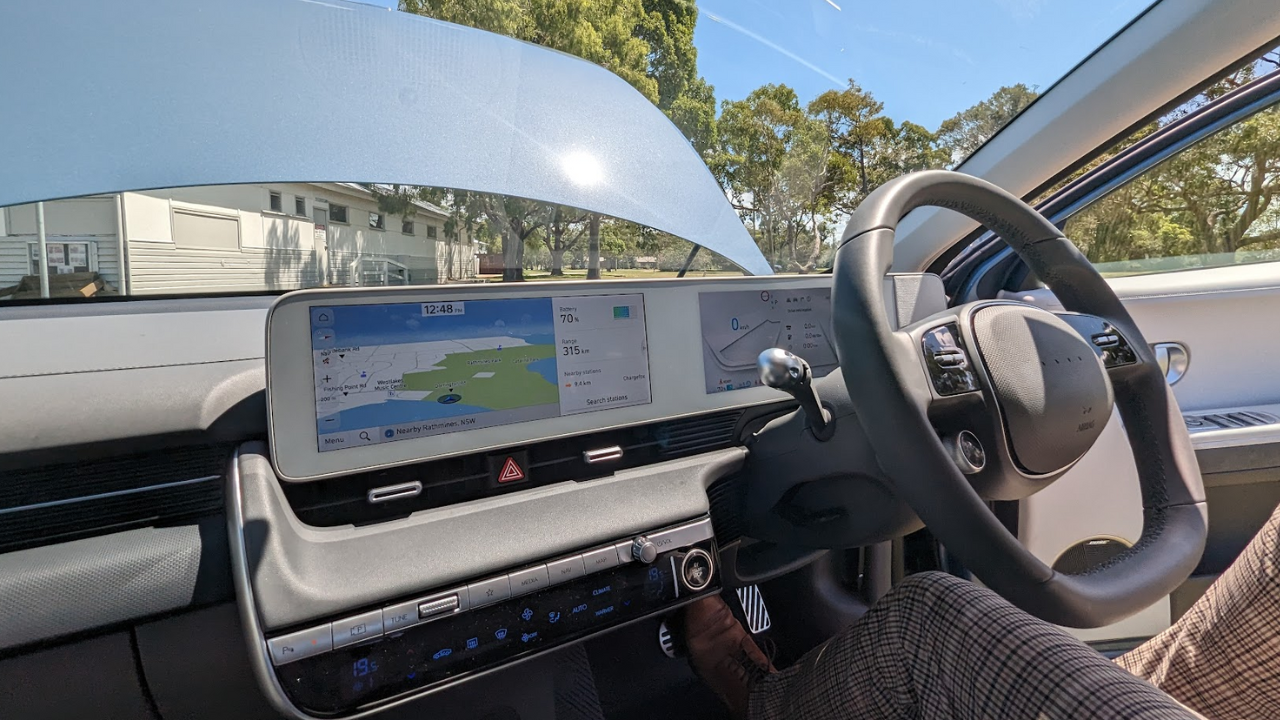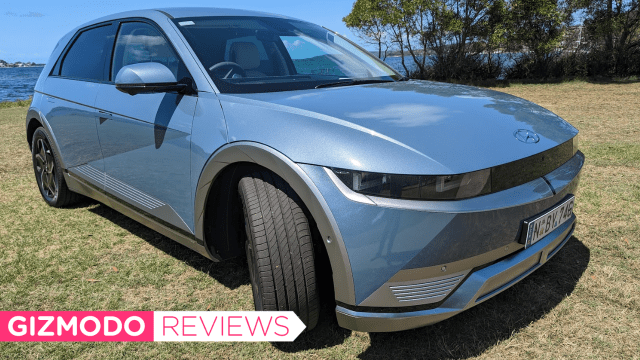The Hyundai Ioniq 5 is an electric vehicle that I’ve been very excited to try out for a long time. The car was originally released in Australia in September 2021, and over the course of 2022, earned a wealth of praise far and wide. The updated 2023 model came out in October and I’m now finally adding my voice to the chorus.
This review comes now for a couple of reasons, most prominently because we wanted to establish a baseline for Hyundai before the Ioniq 6 arrives in Australia (which we’re fairly excited for). We also wanted to see what the fuss was about – we’ve reviewed many of the Ioniq 5’s direct competitors, including the Tesla Model Y, Kia Niro and the Kia EV6, and it’s only right that we see what Hyundai’s bringing to the table.
And it has genuinely impressed me. I don’t think I’ve been this impressed with an electric vehicle since reviewing the Polestar 2, which we called our favourite EV of the year.

Cyberpunk, but make it nice
There’s a tendency among electric vehicles to lean into looking futuristic – like set dressing on Altered Carbon or in the background of metropolitan Star Wars scenes. This was the gist of the Kia EV6, which went hard on the aesthetic. But while the Ioniq 5 follows through with the same stylistic notes, it’s a tad more reserved.
The Hyundai Ioniq 5 has a distinctly flat front with LEDs across the grill, with a mix of curves and square angles from front to back. The hatch on the back includes ‘IONIQ 5’ lettering, with an array of pixel-like LEDs across the hatch making up the brake lights.

The sides of the car look fairly standard among SUVs and don’t have much of the same cyberpunk flare as the rear and front, and on the model we reviewed (the cheaper ‘Dynamiq’), there was no panoramic roof (while it is available on more expensive models).
I think it’s the best-looking EV I’ve reviewed since taking the Polestar 2 for a spin, ringing true for the insides as well.

Inside out
The Ioniq 5 is a spacious dream. The driver’s seat of the car is easily adjusted, and the centre console has been gutted. There’s an armrest and barriers on the floor for where you might put assorted centre-console items (with enough space for a coat), but without the large mid-car box, it feels like there’s an abundance of legroom. The same can be said for the backseats.

If the driver wanted, the back seats can be pulled forward with an under-seat bar. the seats can also be folded forward and back, which adds an extra layer of comfort for those in the back.

The boot of the car is easily accessible with its hatch, and there’s a lot of space to use (527 litres in the back or 1,587 litres with the seats folded down). For a car that feels almost small enough to call a hatchback, it can fit a lot of stuff in its trunk.

The white leather seats and trimming of the insides weren’t particularly to my taste (2023 and we’re still using leather, rather than more sustainable and less cruel alternatives?) and I can see it getting quite grubby after not too long, but parts of the door trim (including the internal armrests and the speaker system) include a decorative blue light that made the car feel like a gaming PC. There are, of course, other colours available on the ordering website, but they’re all leather.

And as for the infotainment system and screens, everything is to my liking. There’s a useful assortment of buttons, with integrated maps software that can navigate you to a nearby charging station.
It’s the same operating system that’s present in the Kia Niro and the Kia EV6, but reskinned for a Hyundai.

And it feels good too
On the road, the Hyundai Ioniq 5 is a pleasure to drive. It feels very stable on its feet (with 235×55 R19 wheels), and is a breath of fresh air having just reviewed the MG ZS EV and the BYD Atto 3 which had a bit more jank. If you’re wondering, it has a 0-100km/h speed of 7.30 seconds.
The driver assistance features, including lane assistance, adaptive cruise control and i-pedal automatic braking (also available in electric Kia models) contribute to this car’s ease of use. There are also adaptive braking adjusters behind the steering wheel, which I loved in the EV6, but I didn’t find particularly useful this time around.
For both highway driving and inner-city driving, the Hyundai Ioniq 5 worked a treat. Range never felt limiting (more on that below) and the operating system just worked well. I felt like I had all the physical buttons I needed, allowing for easy access to the 360 camera system (which this car has), the inbuilt map app and the climate adjustments, while the screen displayed all the necessary information I needed at any given time.

I used a mix of Android Auto and the inbuilt car operating system over my week of use, and while Android Auto is still my preferred car infotainment system, the Kia/Hyundai OS impresses me the more I use it. It’s just a shame that it doesn’t display speed limits in school zones correctly on its HUD or on its maps software.
And yes, I mean HUD. Like in the Niro, the driver gets a heads-up display showing speed limit, current speed, lane assistance status, cruise status and inbuilt maps directions. It’s seamless and adds to the premium feel.
But there was one particular feature that won me over the most – the battery and charging speeds.

The charging speeds seal the deal
The Ioniq 5 2023 Dynamiq includes a WLTP range of 507km, while the AWD configurations (in the more expensive models) offer a WLTP range of 454km.
It’s a terrific range for an EV, an improvement over the previous model released in 2021, and was perfect for driving from Sydney to Forster and back, only stopping for two 20-minute charges across the weekend.
All models of the Ioniq 5 offer a killer feature – 230kW charging speeds, similar to that of the competing Tesla Model Y. When using a 350kW charger, this meant that I pumped the battery up from 17 per cent to 80 per cent in just 20 minutes. If the battery were any lower, the speed would have increased, dropping off as the battery level rose.

I loved this. Charging is a bit of a hassle for EV drivers, and this feature meant I was spending much less time at chargers. My jaw dropped when I saw how fast it was charging – the 2022 Polestar 2 would be unable to charge this fast with its max 133kW charging speed (needing at least an extra 10 minutes to get to a comfortable battery level), as would many other EVs.
This is what most impressed me about the Dynamiq. I don’t want to spend so long charging the car up – I want to be driving it. And this feature gives me just that.
Should I buy the Hyundai Ioniq 5?
If you’re shopping at the $70-80,000 price point, I recommend the Ioniq 5 over many of its competitors.
Talking aesthetics, the Ioniq 5 is the electric vehicle I’m most impressed with at this price point, although I would have loved the seats to be offered in a fabric that isn’t leather.
I hope to be similarly impressed with the Ioniq 6, which is built on the same platform, but has a different body.
The Hyundai Ioniq 5 starts at $72,000 for the RWD Dynamiq (which we reviewed), $79,500 for the AWD Techniq and $85,000 for the AWD Epiq.
Want more Aussie car news? Here’s every EV we’ve reviewed in the last two years, all the EVs we can expect down under soon, and our guide to finding EV chargers across the country. Check out our dedicated Cars tab for more.
